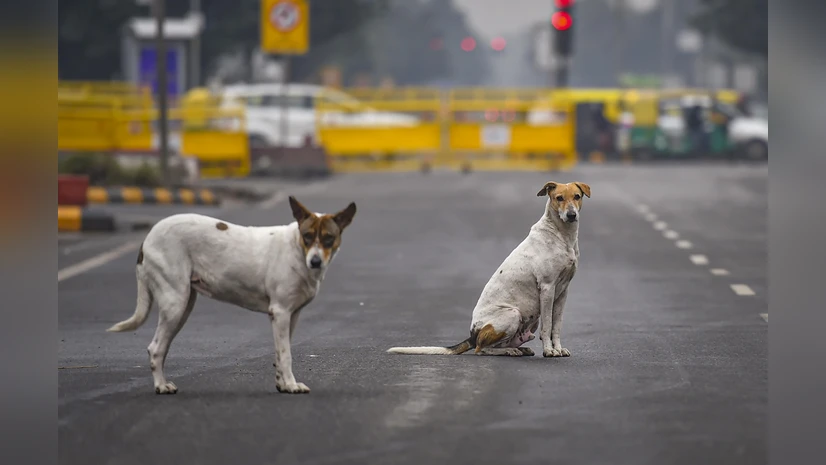The Supreme Court has dropped a bombshell on Delhi’s administration. India’s top court on Monday ordered the removal of stray dogs from New Delhi’s streets, citing a surge in dog bite cases. The Supreme Court instructed authorities to capture 5,000 dogs from ‘high-risk areas’ within six to eight weeks, sterilise them and relocate them to shelters. But here’s the million-rupee question: Is this ambitious timeline realistic, or are we setting up for another administrative nightmare?
Table of Contents
The Supreme Court’s Clear Mandate
Let’s break down what the apex court actually ordered. The Supreme Court has ordered the relocation of all stray dogs in Delhi-NCR to shelters amid rising rabies deaths and dog bites, warning strict action against those obstructing the drive. This isn’t just a suggestion – it’s a directive with serious consequences for non-compliance.
Delhi Mayor Iqbal Singh welcomed the Supreme Court’s decision to relocate stray dogs to shelters in Delhi-NCR and assured that the administration will implement the order within the next six weeks. The mayor’s confidence is reassuring, but the ground reality tells a different story.

The Numbers Game: What Delhi Faces
| Challenge | Current Status | Required Action |
|---|---|---|
| Dogs to Remove | 5,000+ stray dogs | Capture from high-risk areas |
| Timeline | 6-8 weeks | SC-mandated deadline |
| Sterilization Centers | 10 existing centers | Adequate for current operations |
| Shelter Homes | None available | Must be established urgently |
| Funding | Budget constraints | Requires immediate allocation |
The Reality Check: Infrastructure Gaps
Here’s where things get complicated. Singh said that Delhi has ten sterilisation centres but doesn’t have shelter homes. He stated that the government will work towards establishing shelter homes, and the MCD will ensure that stray dogs do not face any problems
Wait, what? Delhi has zero permanent shelter homes for the thousands of dogs they’re supposed to relocate? This is like planning a massive relocation without having destinations ready. The Municipal Corporation of Delhi (MCD) clearly has its work cut out.
The Plan: From Capture to Care
Delhi Chief Minister Rekha Gupta said the issue of the stray dog menace has reached a critical stage, and the government will address it through a “comprehensive”, “well-structured” plan.
The proposed approach:
- Phase 1: Identify and capture dogs from high-risk areas
- Phase 2: Sterilization at existing 10 centers
- Phase 3: Relocation to newly established shelters
- Phase 4: Long-term care and monitoring
But officials noted the civic bodies will start the process of implementing the apex court’s order in a phased manner after Independence Day. So we’re looking at mid-August start for a six-week deadline – that’s cutting it extremely close.

The Controversy: Animal Rights vs Public Safety
This isn’t just about logistics – it’s sparked a heated debate. PETA India Advocacy Associate, Shaurya Agrawal, criticised the Supreme Court’s order to relocate stray dogs to shelters in Delhi-NCR, calling the decision “impractical and illogical” as it is going to “create chaos and more problems.”
The shift from the traditional capture-neuter-release model to capture-shelter-retain represents a fundamental change in animal welfare policy. Critics argue this approach could overwhelm whatever shelter infrastructure Delhi manages to create.
Financial Reality: The Elephant in the Room
Supreme Court orders removal of 5,000 stray dogs in Delhi within six weeks – but MCD’s funding, capacity, and operations raise questions amid animal rights concerns
Running shelters for 5,000+ dogs isn’t cheap. We’re talking about:
- Daily feeding costs: ₹50-100 per dog
- Medical care: Ongoing veterinary expenses
- Staff requirements: 24/7 care and security
- Infrastructure: Land, buildings, equipment
For a cash-strapped MCD, this represents a significant financial burden that could stretch into crores annually.
What This Means for Delhi Residents
For apartment owners and residents, it moves from a capture-neuter-release approach to capture-shelter-retain, removing stray dogs from public life entirely. This could mean:
- Safer streets for children and elderly
- Reduced rabies risk in residential areas
- Cleaner neighborhoods without pack behavior issues
- Long-term solutions instead of temporary fixes
The Verdict: Ambitious but Necessary?
The Supreme Court’s order addresses a genuine public health crisis. Rising dog bite cases and rabies deaths demand urgent action. But the six-week timeline seems optimistic given Delhi’s track record with large-scale implementations.
Success will depend on:
- Rapid shelter construction or partnerships with existing facilities
- Adequate funding allocation from state and central governments
- Public cooperation during the capture process
- Sustainable long-term care plans for relocated dogs
While the intention is commendable, Delhi’s administration faces its biggest urban animal management challenge yet. The next six weeks will reveal whether good intentions can translate into effective execution.
What’s your take on this massive stray dog relocation plan? Do you think Delhi can pull this off, or are we heading for another administrative mess? Share your thoughts and experiences with stray dogs in your neighborhood.
Stay updated with Delhi’s civic challenges and government initiatives at Technosports Delhi News.
Read more: How much money will Barcelona earn by playing La Liga match in the USA against Villarreal?








